Art History
Masterpiece or Hot Mess? Here Are 7 Bad Paintings by Famous Artists
Even the most adept of painters can totally miff it.

Even the most adept of painters can totally miff it.

Artnet News

Ah, the expressive brush strokes of Van Gogh, and oh, Chagall’s dreamy scenes! Celebrated artists throughout history have produced some of the world’s most ravishing works, executed with an unparalleled mastery of light and color, line and space. But let’s face it: they also turned out their share of duds. We’re not talking about paintings intended to capture the grotesquerie of human life, but artworks that evidence clumsy mark-making, questionable choices, or a rudimentary hand. Even the most adept of painters, it seems, have their off days.
Don’t believe? Here are seven artworks by famous artists that will make you question their credentials.
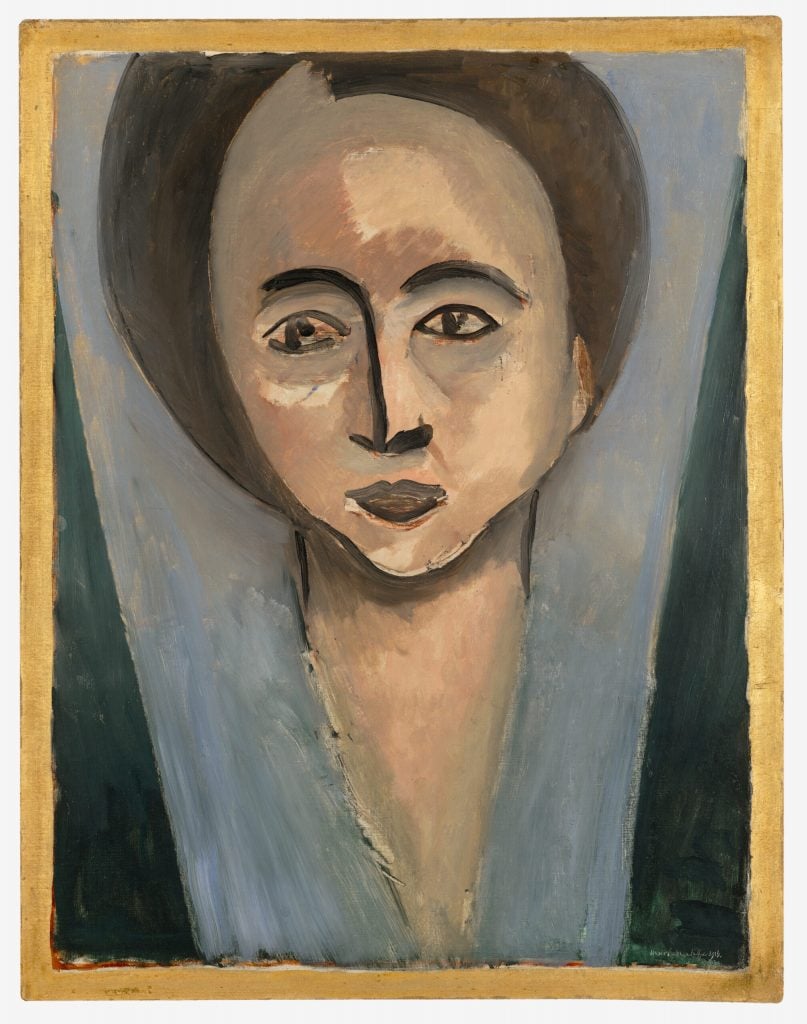
Henri Matisse, Portrait of Sarah Stein (1916). Photo: collection SFMOMA © Succession H. Matisse / Artists Rights Society (ARS), New York.
Matisse’s portraits are recognized for their evocative planes that seem to bear out the sitters’ psychological states. But not so much in this work. Part of a double portrait of his patrons, Michael and Sarah Stein, Matisse here has rendered Mrs. Stein sans dimensions, her facial features overly simplified and her neck caught between what seem like giant scissor blades. His vibrant palette is also absent here, save for the light patches he slapped onto Stein’s face. Even the study Matisse did of Stein looks grades better than this completed portrait—just saying.
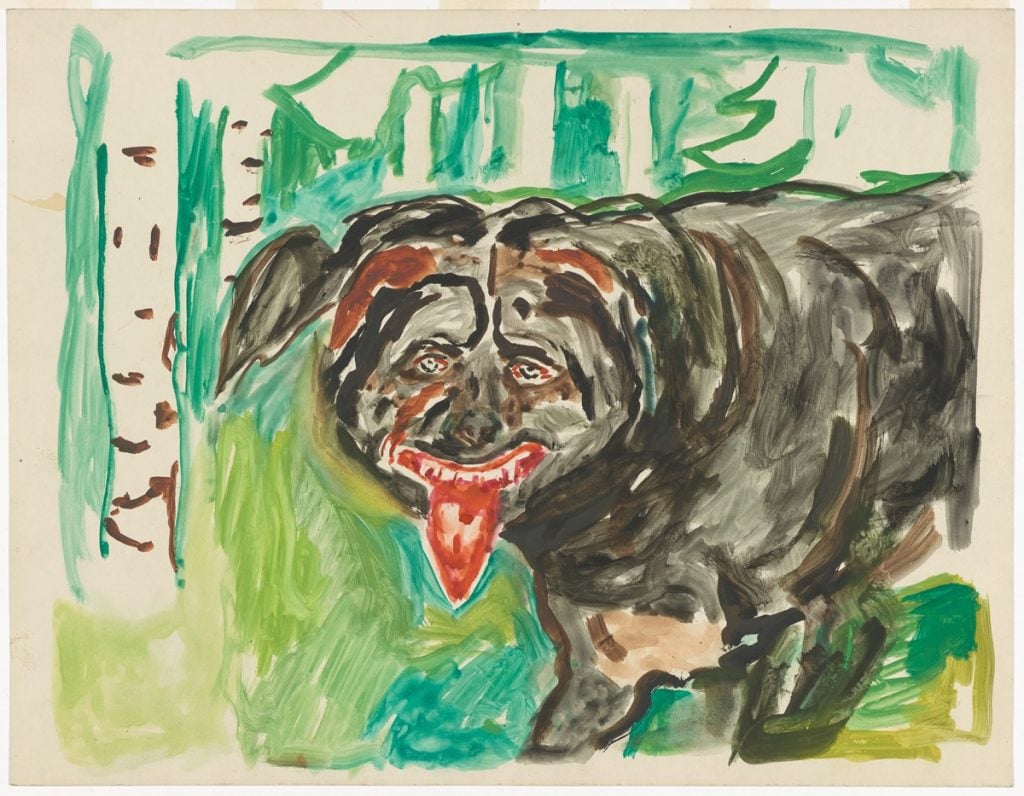
Edvard Munch, Angry Dog (1938–43). Photo: © Munchmuseet.
In case you couldn’t tell, Munch did not like this dog. While the Norwegian artist was certainly an animal lover, this pooch, which belonged to his neighbor, was apparently an untamed beast that did not endear itself to Munch. “I have myself many times on dark nights been attacked by it,” he wrote, “even right outside my own house.” Such behavior only slightly excuses this hastily daubed piece of nightmare fuel, in which the titular dog seems not so much angry as ready to escort you to the underworld.
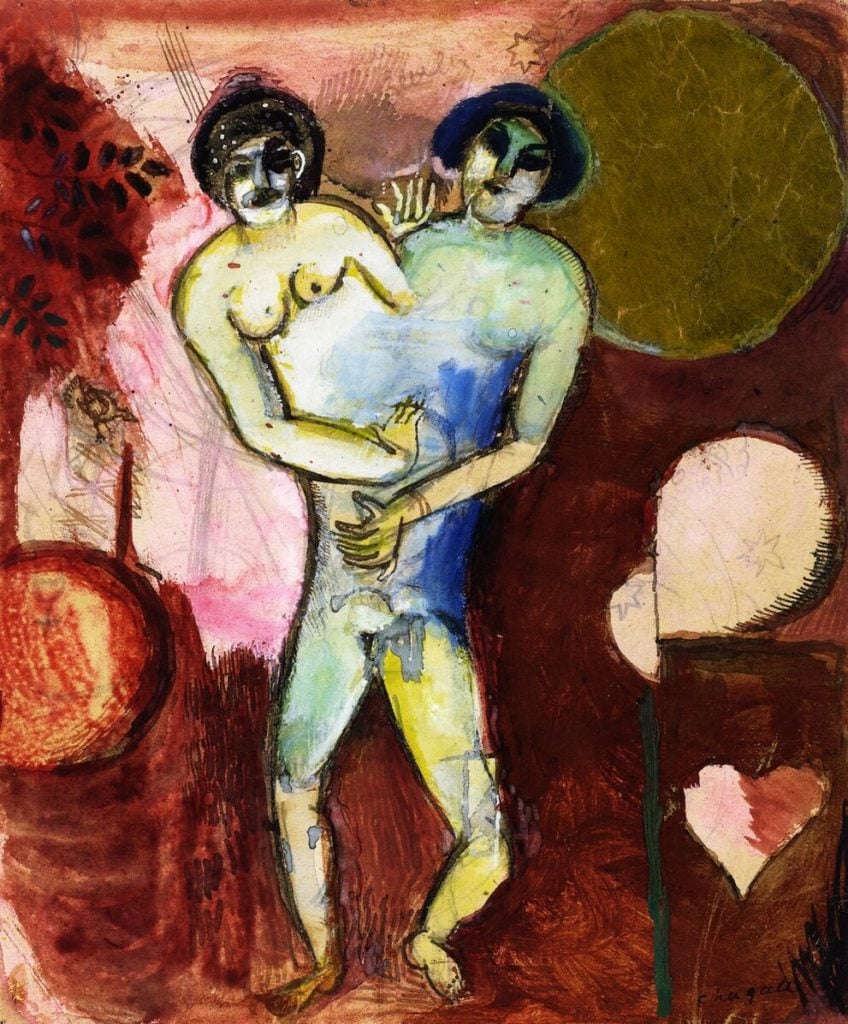
Marc Chagall, Hommage à Apollinaire (study) (1911). Photo: Wikimedia Commons.
Granted, Chagall’s work has tended toward the whimsical and symbolic, but this garish work, a study for his ode to poet Guillaume Apollinaire, is probably best left unseen. While the piece is meant to depict the conjoined bodies of Adam and Eve, it instead captures confused proportions and a gaudily muddled background. To be fair, it is a study, which did pave the way for a stunning avant-garde canvas, so we’ll go easy on this one.

Vincent van Gogh, Young Man With Cornflower (1890). Photo: Fine Art Images/Heritage Images via Getty Images.
Sorry to break it to you, but Van Gogh produced a handful of real lemons in his day. Our vote, however, must go to his painting of a youth he encountered at Auvers-sur-Oise. Surely, the artist’s intention was to capture the subject’s sunbaked complexion and radiant smile—the “je ne sais quoi of the eternal,” as Van Gogh described it. But what he turned out was a green-eyed, spotty-cheeked, pointy-eared creature, his discolored lips clamping down on a cornflower stem. I don’t know what, indeed.
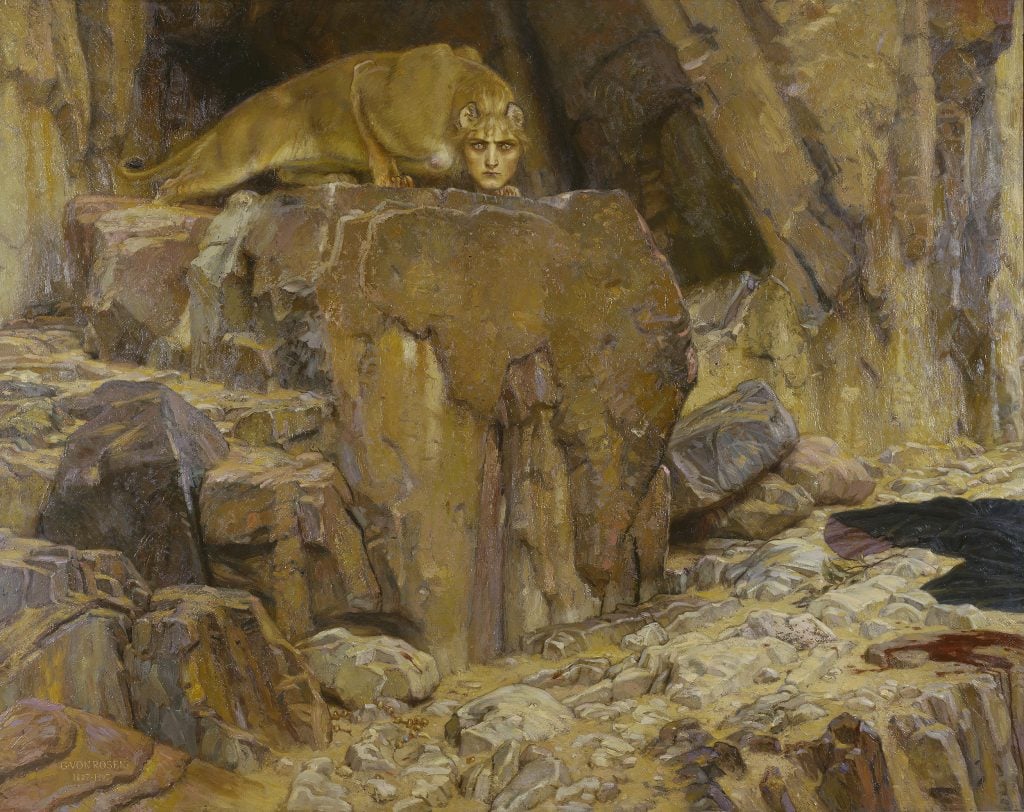
Georg von Rosen, The Sphinx (1887). Photo: Heritage Art/Heritage Images via Getty Images.
Though hardly the most well-known name on this list, Swedish painter Georg von Rosen was recognized toward the end of the 19th century for his finely detailed historical scenes, created in strict academic style. Which makes this 1887 artwork downright baffling. Von Rosen’s portrayal of the mythical critter has the body of a lion and the head of a human female, except the proportions are so out of whack that it distracts from the meticulously drawn work. Seriously, where’s her neck at, Georg?
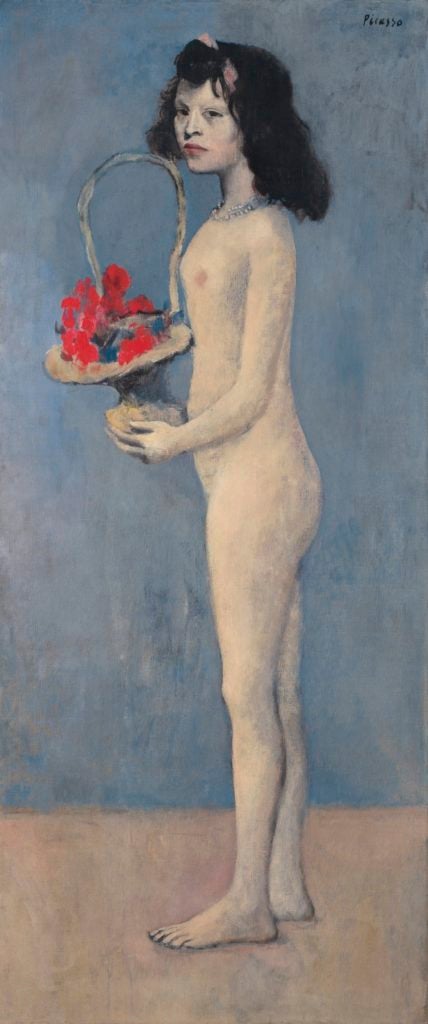
Pablo Picasso, Fillette à la corbeille fleurie (1905). Photo: courtesy Christie’s Images Ltd.
Put aside, if you can, the grossly asymmetrical power dynamics of a grown man having a child pose in the nude for him, and still, this early Picasso canvas is, well, not his best. The face of the mononymous “Linda” is drawn with some evocative world-weariness, but she’s otherwise clumsily rendered (the work’s one-time owner Gertrude Stein bemoaned the girl was painted with “feet like a monkey”). Not that the circumstances and gaucheness of the painting hurt its market: this hot mess was snapped up for $115 million at Christie’s in 2018.
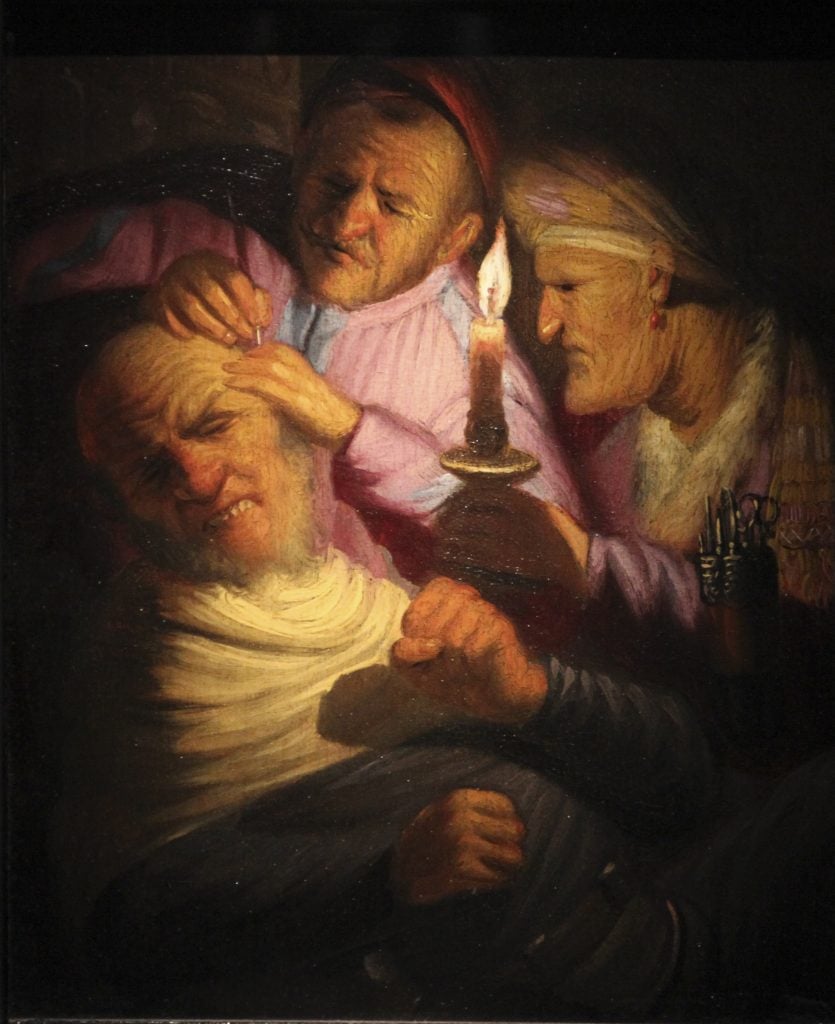
Rembrandt van Rijn, Stone Operation (Allegory of Touch) (c. 1624-25). Photo: Simon Song/South China Morning Post via Getty Images.
At 18, Rembrandt created a series of paintings, each an allegory of one of the five senses. Understandably for a young—but no less gifted—artist, these works don’t reach the level of realism and tenebrism that marked the Dutch master’s later works. Smell and Hearing are forgivable, but Touch, showing a man undergoing a quack operation, is downright cartoonish, from the doctor’s three-fingered hand to the onlooker’s pinhole eye. Surely, the scene is meant to be comical, but not this much of a joke.
More Trending Stories:
A Shipwreck Off the Coast of Colombia May Hold $20 Billion Worth of Treasure
Hot! How a Backyard Photographer Captured Some of the Most Detailed Images of the Sun
Chinese Artist Chen Ke Celebrates the Women of Bauhaus in a Colorful, Mixed-Media Paris Debut
A Centuries-Spanning Exhibition Investigates the Age-Old Lure of Money
Meet the Woman Behind ‘Weird Medieval Guys,’ the Internet Hit Mining Odd Art From the Middle Ages
Conservators Find a ‘Monstrous Figure’ Hidden in an 18th-Century Joshua Reynolds Painting
A First-Class Dinner Menu Salvaged From the Titanic Makes Waves at Auction
The Louvre Seeks Donations to Stop an American Museum From Acquiring a French Masterpiece